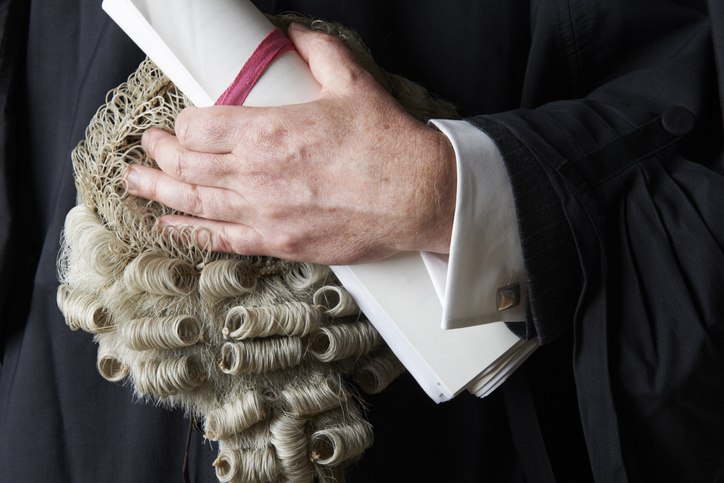What you wear to a courtroom holds a lot of importance and meaning to the state of proceedings, indicating everything from formality to power and familiarity. Whether it be a professional suit and tie or the more traditional barrister’s wig and robe, read on to find out what role your attire plays in courtroom etiquette.
Why is Wearing Formal Attire in Court Important?
On a general level, donning professional clothes in court indicates respect for the law both from you and from the civilians attending court. It also helps to make an important first impression.
If you are a lawyer, your client will have more trust in your professional ability. If you are a judge, it helps to demonstrate your power and authority in the proceedings. And if you are attending court, whether as a witness, defendant, jury member or part of an audience, it can help to show your respect for the court.
Formal attire is also an important part of the history of court and will enable you to show respect for the traditions of a courtroom and maintain the reputation of the court.
Wigs and Gowns for Barristers and Judges
In some settings, particularly in criminal cases, wigs and gowns are necessary court attire for barristers and judges to help emphasise the power of the court in more serious courtroom cases.
For other cases though, in civil law and family law for example, wearing the wig and gown is for more ceremonial purposes. This can help the courtroom to feel more relaxed and encourage defendants and witnesses to be more comfortable and relaxed. This is especially important for cases involving children so they don’t feel overwhelmed.
The wigs are often seen historically as a symbol of politeness and civil society, helping to elevate the barrister or judge to give them more authority and paint them as figures to be respected. The gown was seen as a sign of status and while it became more ceremonial in other academic fields, its presence in the courtroom persisted.

Barrister Wig
It’s also thought that the gowns are traditionally black as a sign of mourning for Charles II, adding a layer of solemnity to the courtroom dress code that continues to this day, enhancing the message of respect that is commanded when entering court.
Professional Lawyer Attire in a Courtroom
Outside of the wigs and gowns worn by barristers and judges, the typical attire found in a courtroom is a professional suit and tie for men or a formal, respectable dress for women.
The two general tips for formal dress at court is to make sure the clothes are conventional and conservative and that they fit properly. This will help you to look more respectable and professional, building both trust and reputation. It shows both a respect for the court and the law you serve as well as helping to put witnesses and defendants at ease, encouraging them to trust more easily in your skills.
The suit or dress should be in neutral colours such as black or dark blue, helping you to look more credible as a professional lawyer and cultivating a positive impact in the court. Unprofessional dress such as bright colours, gaudy jewelry and casual wear may put witnesses and defendants in a state of unease and create a negative impression with the jury and the judge.
Making sure you look smart and professional is an important step in making your case to the jury and could have the potential to make a positive influence on their decision as it will lend weight to your argument.
Formal Clothes For Civilians in Court
It’s just as important for civilians appearing in court to wear professional attire as it will help to show you’re taking the court proceedings seriously and respect both the judge and the law as a whole. This counts for jury members, defendants, witnesses and the audience.
If you are a member of the jury, dressing smartly will help you to look more professionally capable of making such a weighty decision and will help to show that you are taking the case seriously, giving it your full attention.
Similarly, defendants on trial or at hearings should also make sure to dress professionally. This will show you’re taking your case seriously and are showing respect for the proceedings. It can also help you to make a great first impression. The more formal you look, the more likely it is for a jury to understand you’re taking this seriously and can be an excellent show of character as your hearing commences.
Witnesses need to dress professionally in muted colours as this will allow the jury to focus on the value of their statements and testimonies. What a witness wears can also help with forging a connection with the jury. The goal of formal witness attire in court is to appear relatable to the jury and to also look professional enough that their testimony carries weight.
As with all roles in court, the formality of the witness’s dress code directly correlates to the respect and influence they have concerning their testimony and the jury.
The formality of court dress has a lot of roots in tradition and history with these connotations having a direct impact on the traditions of the modern world. The key things to take away from the importance of court attire is their role in garnering respect from all involved parties.
Whether you’re a judge or a defendant, dressing appropriately can have a massive impact on how events in court play out and your attire will play an important role in highlighting your character as you aim for a positive outcome in the case.